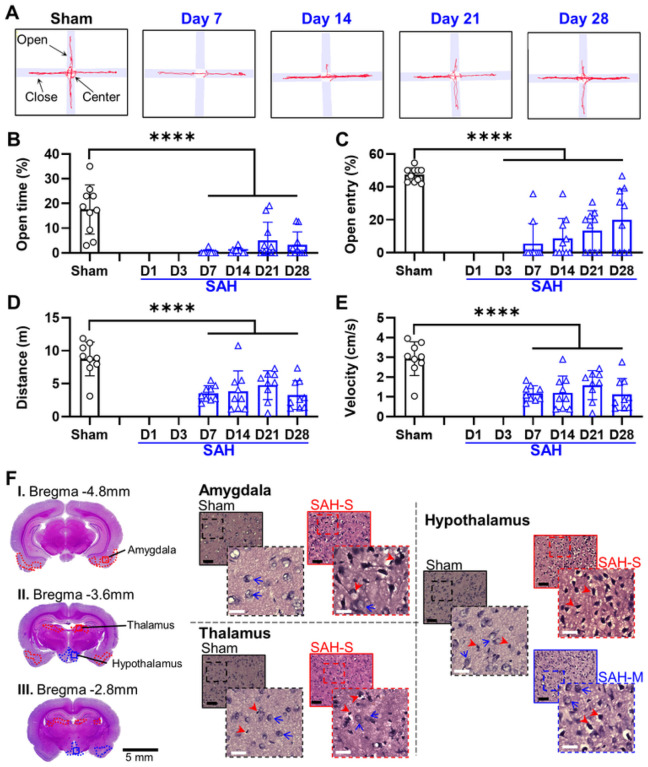Figure 6.
SAH induces anxiety and decreases exploratory and locomotor behavior in the elevated maze (EM) assessment in association with damage affecting the amygdala, thalamus and hypothalamus. A: Representative traces illustrate decreased movement into the open arms by SAH rats, with a trend towards improvement over time. B: SAH rats spent less time in the open arms indicating increased anxiety-related behavior. C: SAH rats made fewer entries into the open arms, consistent with increased anxiety. D: Decreased locomotor function was observed in SAH rats, as shown by decreased total distance travelled. E: Velocity of movement was also decreased following SAH, indicating impaired locomotor function. F: Moderate damage (blue outline) was observed in the hypothalamus and amygdala following SAH induction, with severe damage (red outline) predominantly observed in the thalamus. Black bar = 100μm; white bar = 25μm; red arrowheads = unhealthy cells; blue arrows = examples of healthy cells; solid outline = 20x = 0.2mm2; dashed outline = 40x = 0.01mm2; **** P < 0.0001, mixed-effects ANOVA.

